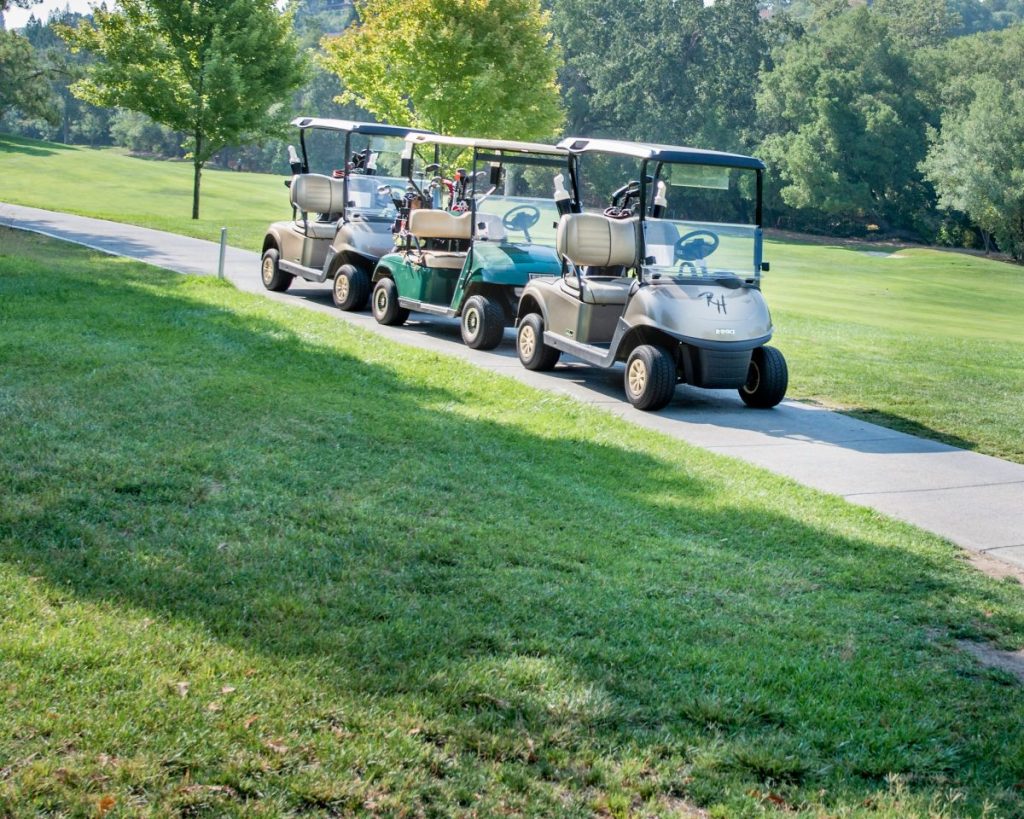In today’s world, efficient and sustainable modes of transportation are highly sought after. One such mode that has been gaining popularity in recent years is the Low Speed Vehicle (LSV). These vehicles, characterized by their maximum speed limit of 20 to 25 miles per hour, compact size, and safety features, are specifically designed for use in confined areas or roads with lower speed limits.
They offer a viable solution for short-distance travel, reducing our reliance on traditional gasoline-powered vehicles and contributing to a more sustainable future. This article provides a comprehensive overview of LSVs, explaining what they are, how they differ from regular vehicles, and the regulations surrounding their use. We also delve into their benefits and practical applications, and discuss the conditions under which golf carts can be classified as LSVs.
Definition and Description of Low Speed Vehicles
Low Speed Vehicles (LSVs) typically have a speed range between 20 to 25 miles per hour. This speed range is enforced by regulatory standards and is one of the defining characteristics distinguishing LSVs from regular vehicles.
Their slower speed makes them ideal for use in controlled environments or on roads with lower speed limits, such as in residential neighborhoods, retirement communities, or within large facilities. However, this speed range also restricts them from being driven on highways and roads with higher speed limits.
Low Speed Vehicles (LSVs) are typically small, compact vehicles designed for specific environments and uses. They usually have a light-weight frame and are often electrically powered to maintain their slow speed. Their physical characteristics often include four wheels, hardtop roofs for protection, and seating for two to four passengers. Additionally, LSVs are required to have certain safety features such as seat belts, headlights, rear lights, reflectors, and mirrors.
They may also have features like windshields and wipers. Their compact size makes them ideal for navigating narrow streets and small spaces, and they are typically easy to park. Despite their smaller size, they are designed to carry a significant load, often used for transporting people, goods, or equipment within a confined area.
Are Golf Carts Low Speed Vehicles (LSVs)?
Yes, golf carts can be considered Low Speed Vehicles (LSVs) if they meet certain criteria. Golf carts are often used in similar environments to LSVs, such as residential communities, golf courses, and large facilities.
However, to be officially classified as an LSV, a golf cart must adhere to specific regulatory standards.
This includes having a maximum speed limit of between 20 and 25 miles per hour and being equipped with essential safety features such as seat belts, headlights, rear lights, reflectors, and mirrors. Furthermore, just like other LSVs, golf carts must be registered and the driver should have a valid license. It’s important to note that regulations can vary, so local laws and rules should always be checked.
Benefits of Low Speed Vehicles
Low Speed Vehicles (LSVs) have a significantly positive environmental impact. Given their often electrically powered design, they do not emit harmful greenhouse gases, unlike traditional gasoline-powered vehicles. This makes them a more eco-friendly transportation option, contributing less to air pollution and global warming.
Additionally, the compact size of LSVs means they require fewer resources to manufacture and maintain, further reducing their environmental footprint. Their use in confined areas or short distances helps in reducing unnecessary use of conventional vehicles, leading to less fuel consumption and fewer emissions. Hence, adopting LSVs can be a part of a sustainable lifestyle, aligning with global efforts towards environmental preservation.
Low Speed Vehicles (LSVs) have a variety of practical applications which make them highly versatile. They are used extensively in closed communities like retirement homes and gated residential areas for local travel, owing to their slower speed and safety features. In large facilities, like warehouses, factories, or expansive campuses, LSVs are employed for internal transportation of goods, equipment, or personnel, making operations more efficient.
They are also popular in tourist areas and resorts for short-distance transport or sightseeing purposes. In urban settings, they can be used for small deliveries or errands within a limited area. Their compact size, ease of parking, and maneuverability in narrow lanes make them ideal for crowded cityscapes.
Difference between Low Speed Vehicles and Regular Vehicles
Low Speed Vehicles (LSVs) and regular vehicles are differentiated by their design, functionality, and regulatory standards. LSVs, primarily designed for specific environments and uses, have a maximum speed of 20 to 25 miles per hour, making them suitable for confined areas or roads with lower speed limits.
They are often compact and electrically powered, equipped with necessary safety features, and designed to carry a significant load despite their smaller size. On the other hand, regular vehicles are typically faster, larger, and designed for long-distance travel, including highways and high-speed roads. They are often powered by gasoline or diesel engines, although hybrid and electric models are increasingly common.
Regular vehicles are also subject to different regulatory standards, including safety and emissions regulations, which are often more stringent than those for LSVs.
Regulations surrounding Low Speed Vehicles
Low Speed Vehicles (LSVs), like all vehicles, are often subject to licensing and registration requirements, which vary by jurisdiction. Typically, an LSV must be registered with a local transportation or motor vehicle department, similar to a regular vehicle.
This registration process usually involves providing proof of ownership, paying a registration fee, and obtaining a license plate or other identifying marker for the vehicle. Furthermore, the driver of an LSV usually needs a valid driver’s license. Some regions may also require insurance for LSVs. It’s important for owners to familiarize themselves with their local regulations to ensure they are legally operating their LSV.
Safety requirements for Low Speed Vehicles (LSVs) are governed by federal motor vehicle safety standards. These standards mandate that LSVs must be equipped with essential safety features such as seat belts, headlights, rear lights, reflectors, mirrors, parking brakes, and windshields. In addition, some states require the use of turn signals and a horn.
These features are designed to ensure the safety of the driver and passengers, as well as other road users. Despite operating at slower speeds, LSVs are often used in close proximity to pedestrians and regular vehicles, making these safety requirements crucial. Compliance with these safety standards is a legal requirement and non-compliance can result in penalties.
Low Speed Vehicles (LSVs) are typically designed to be driven in controlled environments or on roads with lower speed limits. Their speed range, between 20 to 25 miles per hour, makes them suitable for use in residential neighborhoods, retirement communities, or within large facilities like warehouses, factories, or expansive campuses.
However, their speed constraint prohibits them from being driven on highways and roads with higher speed limits. In tourist areas and resorts, they can be used for short-distance transport or sightseeing. In urban settings, they can be used for small deliveries or errands within a limited area.
It’s important to note that the exact locations where LSVs can be driven may depend on local laws and regulations.
Low Speed Vehicles (LSVs) are a versatile and efficient mode of transportation, particularly designed for confined spaces and regions with lower speed limits. Their characteristics, such as a maximum speed range of 20 to 25 miles per hour, compact size, light-weight frame, and essential safety features, make them suitable for various applications.
From residential neighborhoods and retirement communities to large facilities like warehouses or campuses, LSVs contribute significantly to efficient internal transportation. They offer an eco-friendly alternative to traditional vehicles, promoting sustainability with their often electrically powered design. It is crucial to understand that while golf carts can be classified as LSVs, they must meet certain regulatory standards. LSVs, like all vehicles, are subject to specific safety and operational regulations, which vary by jurisdiction.
Awareness and adherence to these regulations is essential for legal operation of these vehicles. Understanding the features and regulations of LSVs is vital for potential users, as this knowledge can guide informed decision-making about whether an LSV is the right choice for their specific transportation needs.



